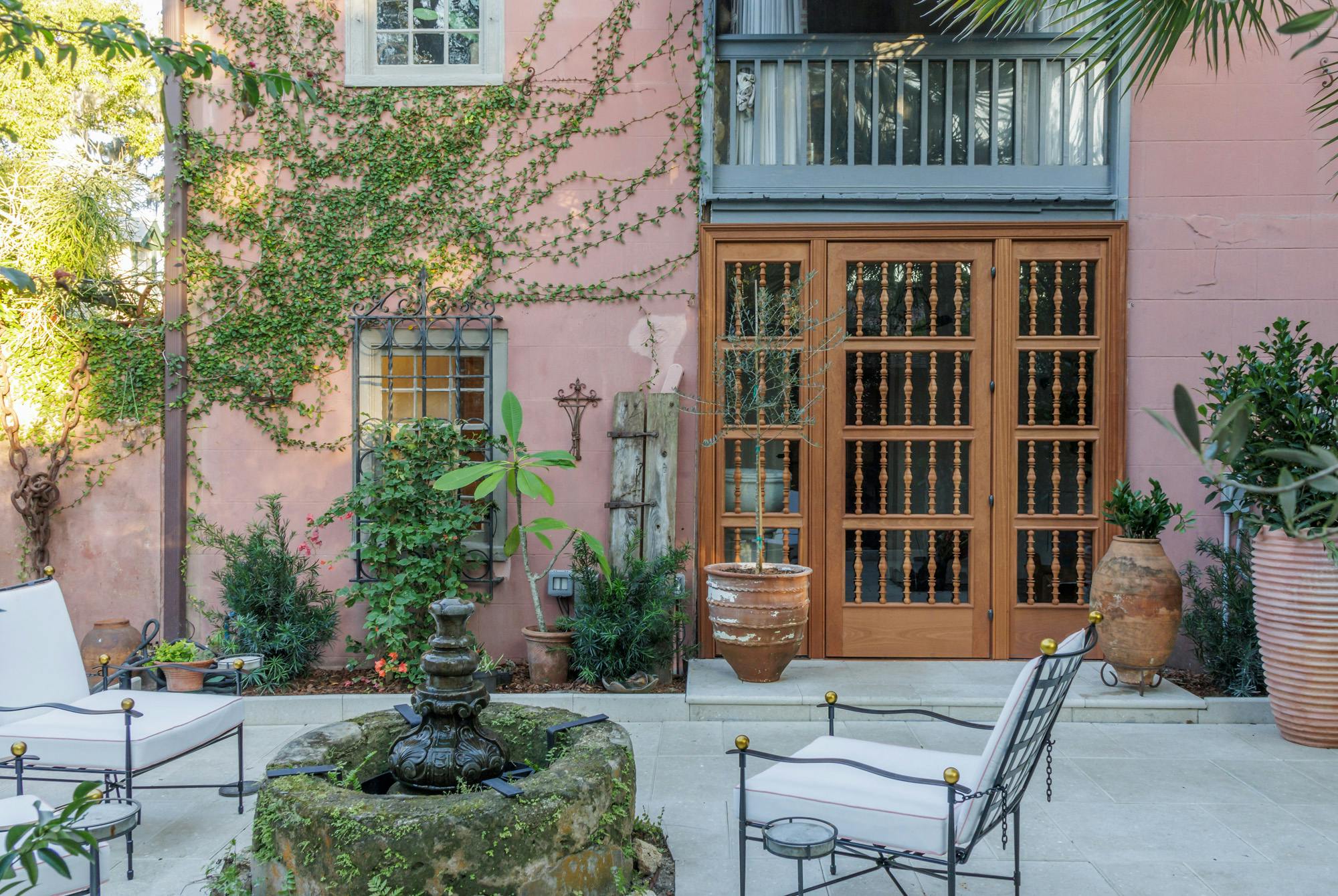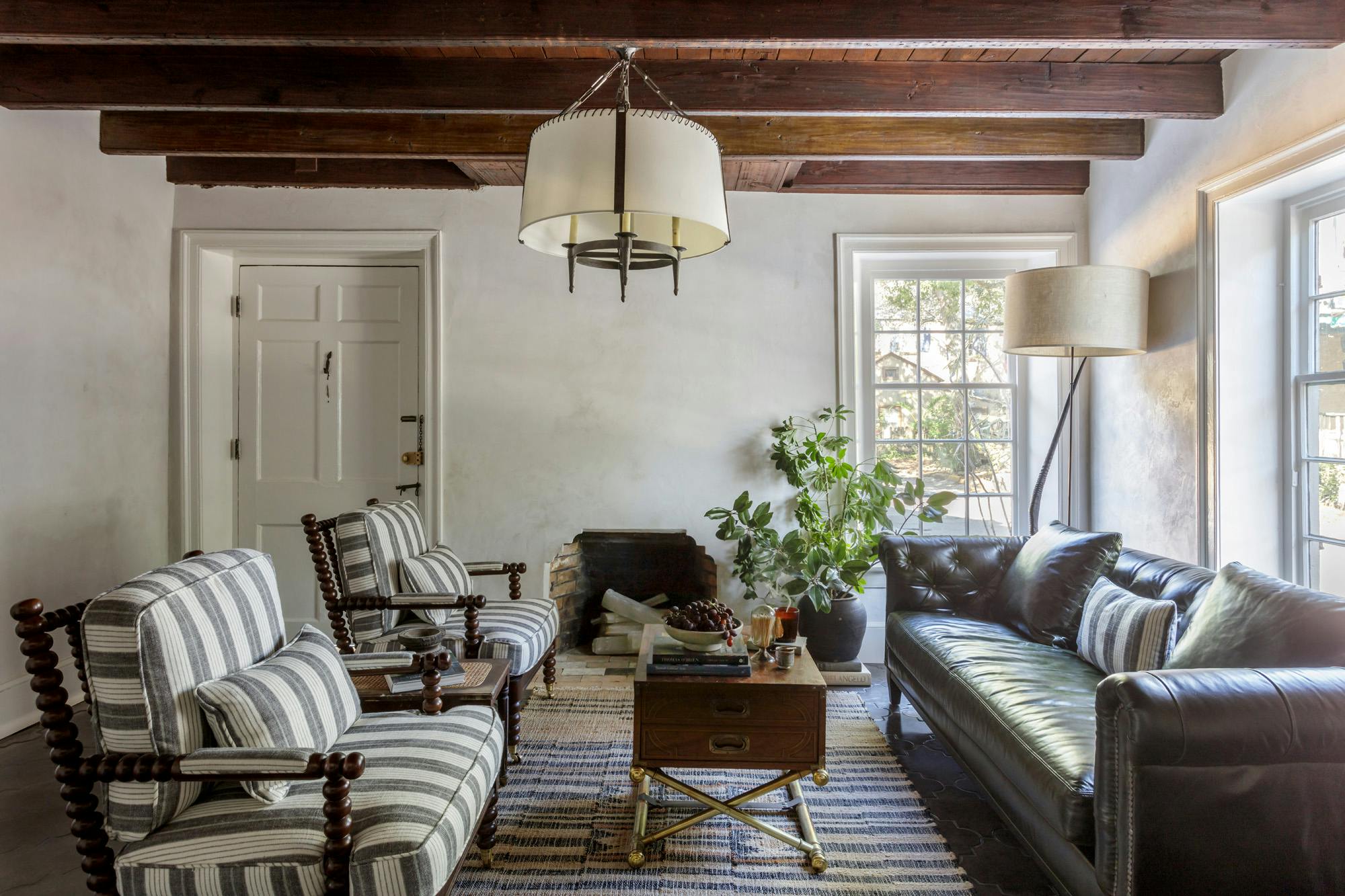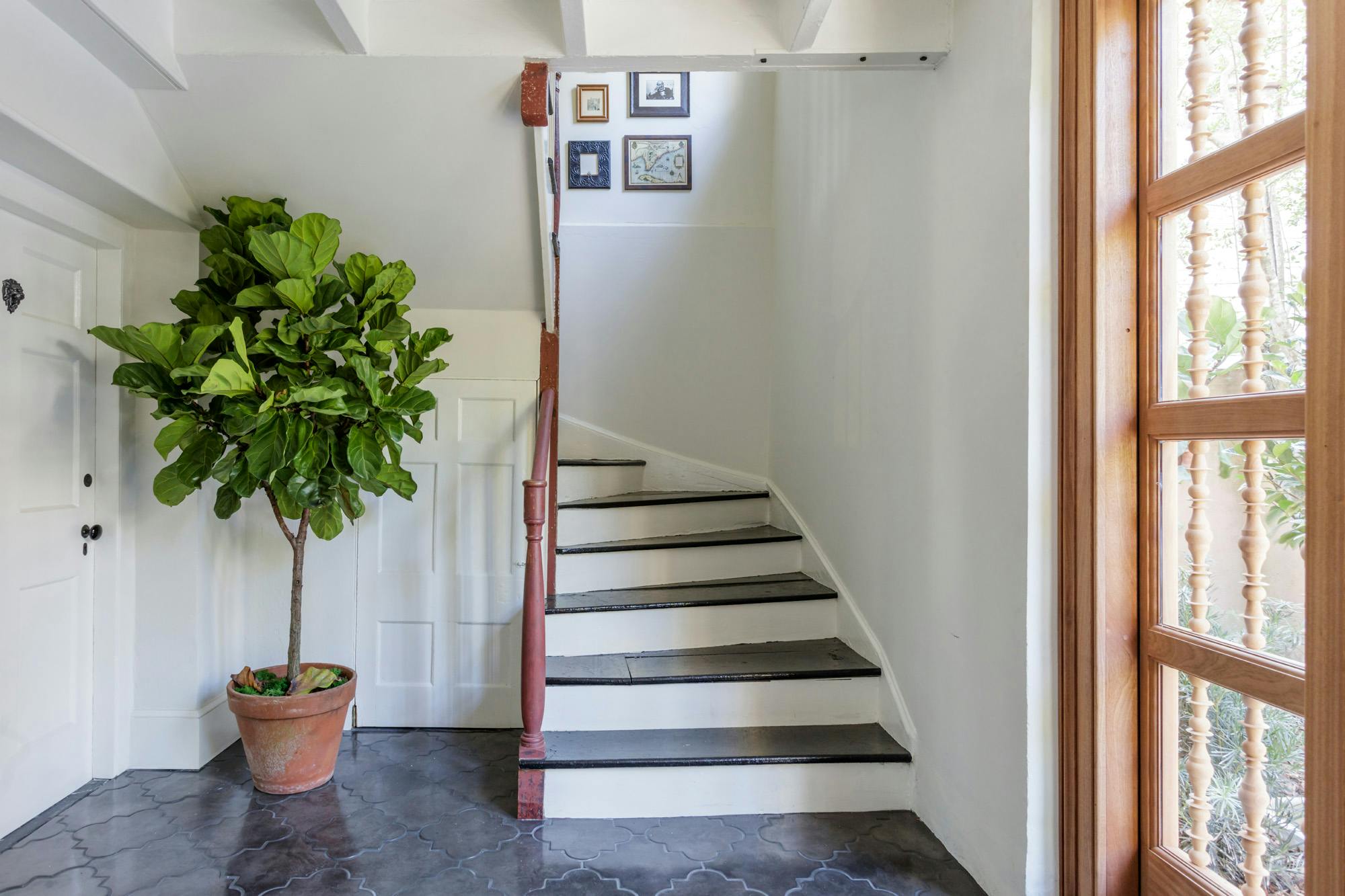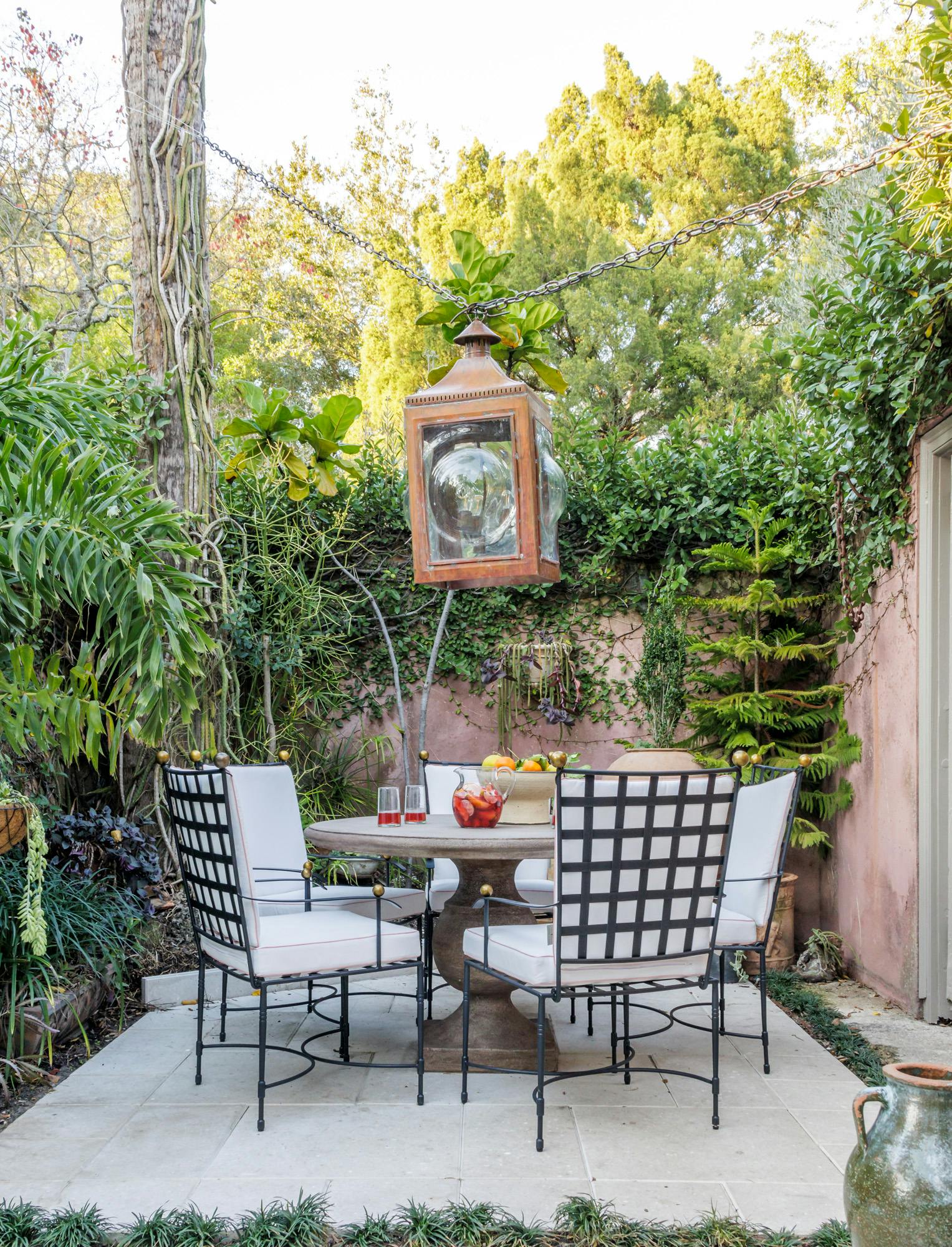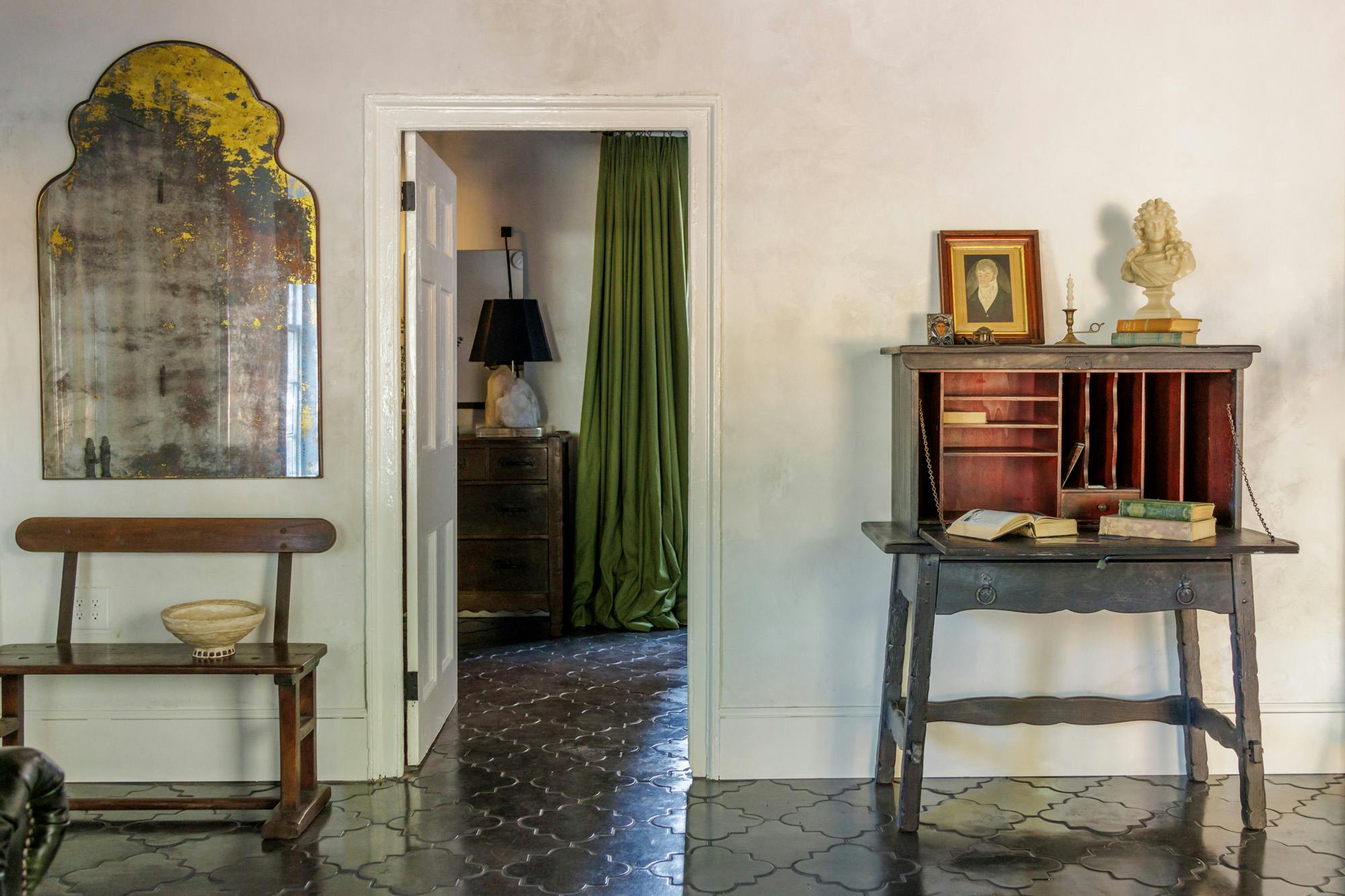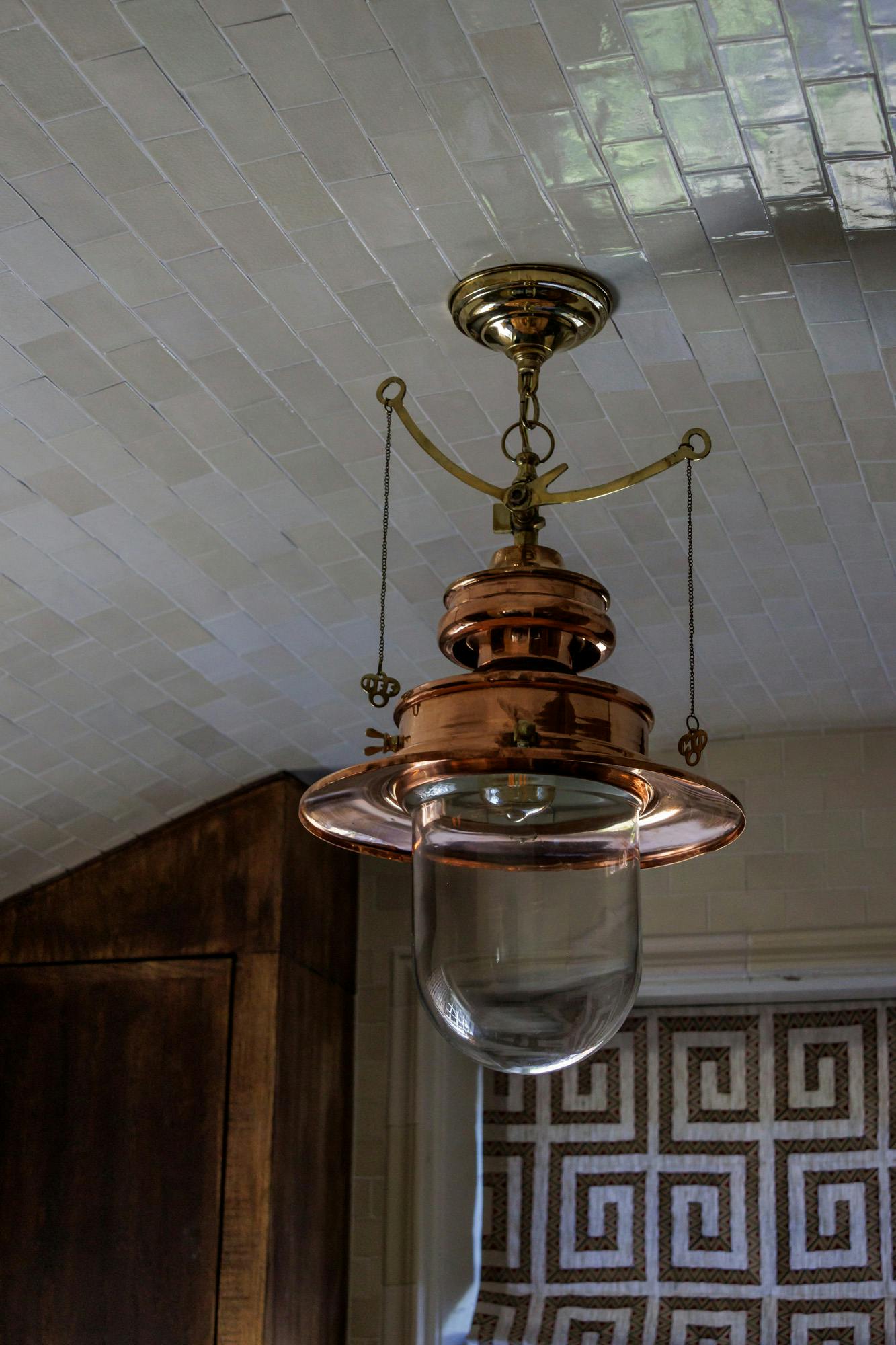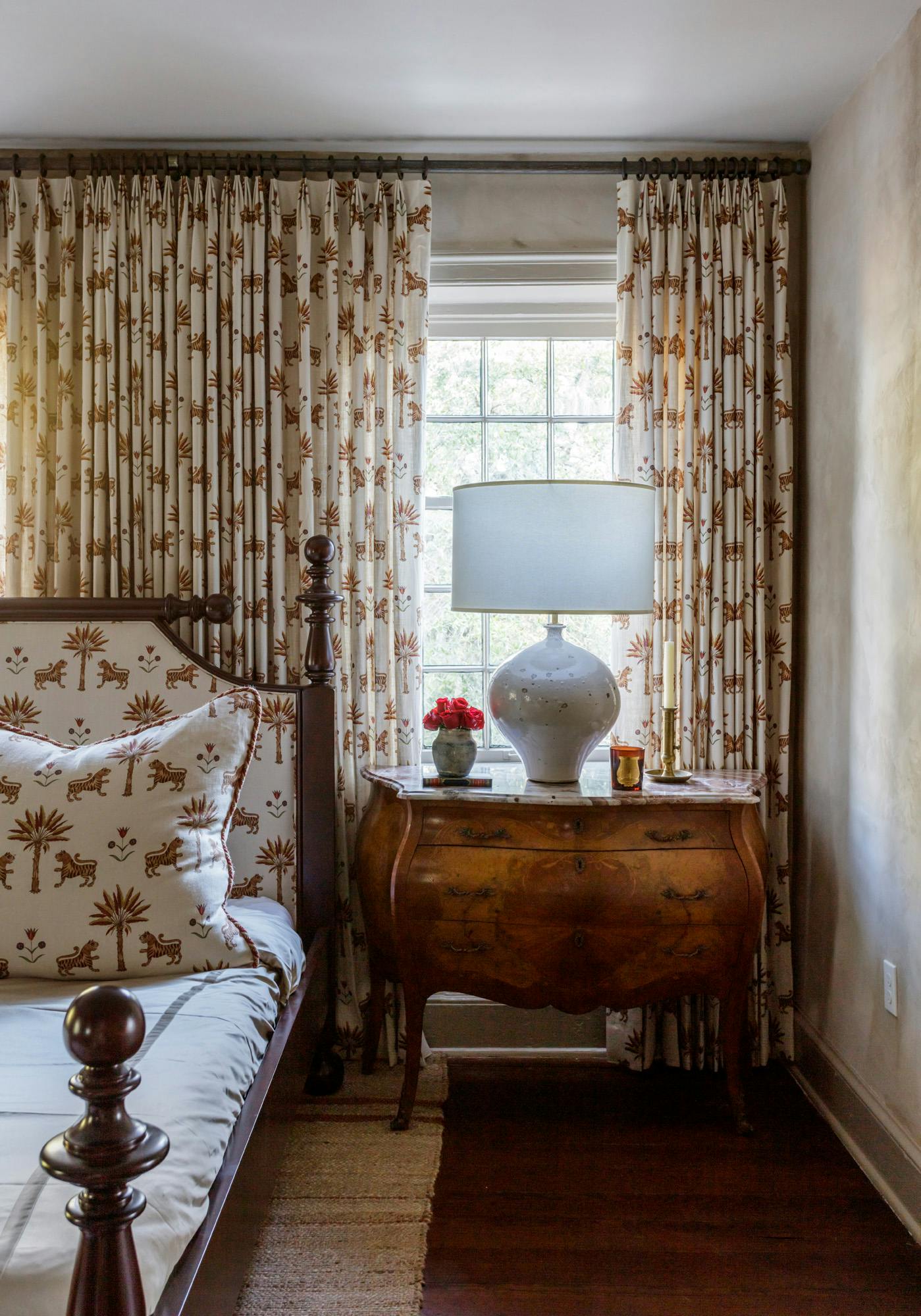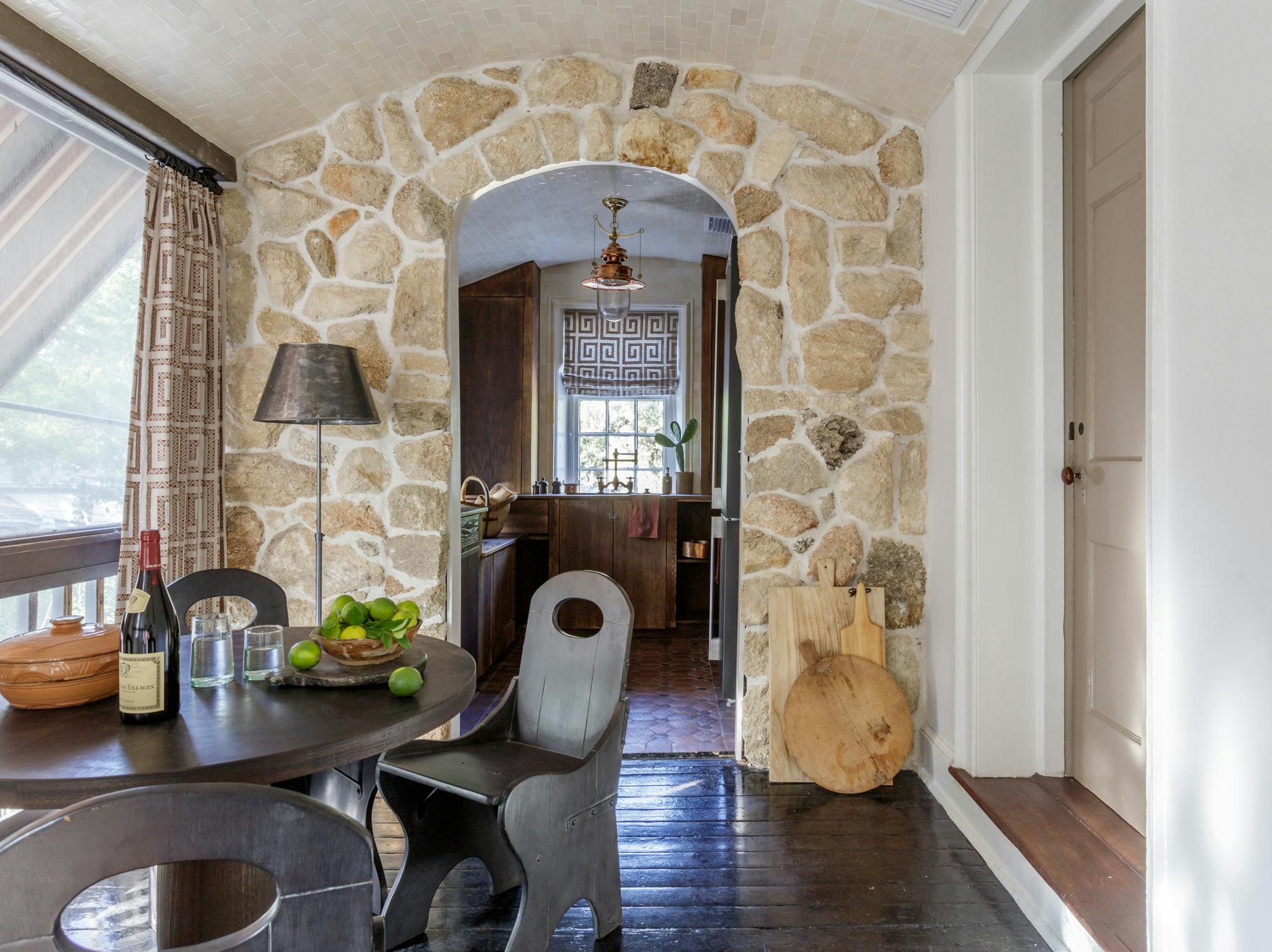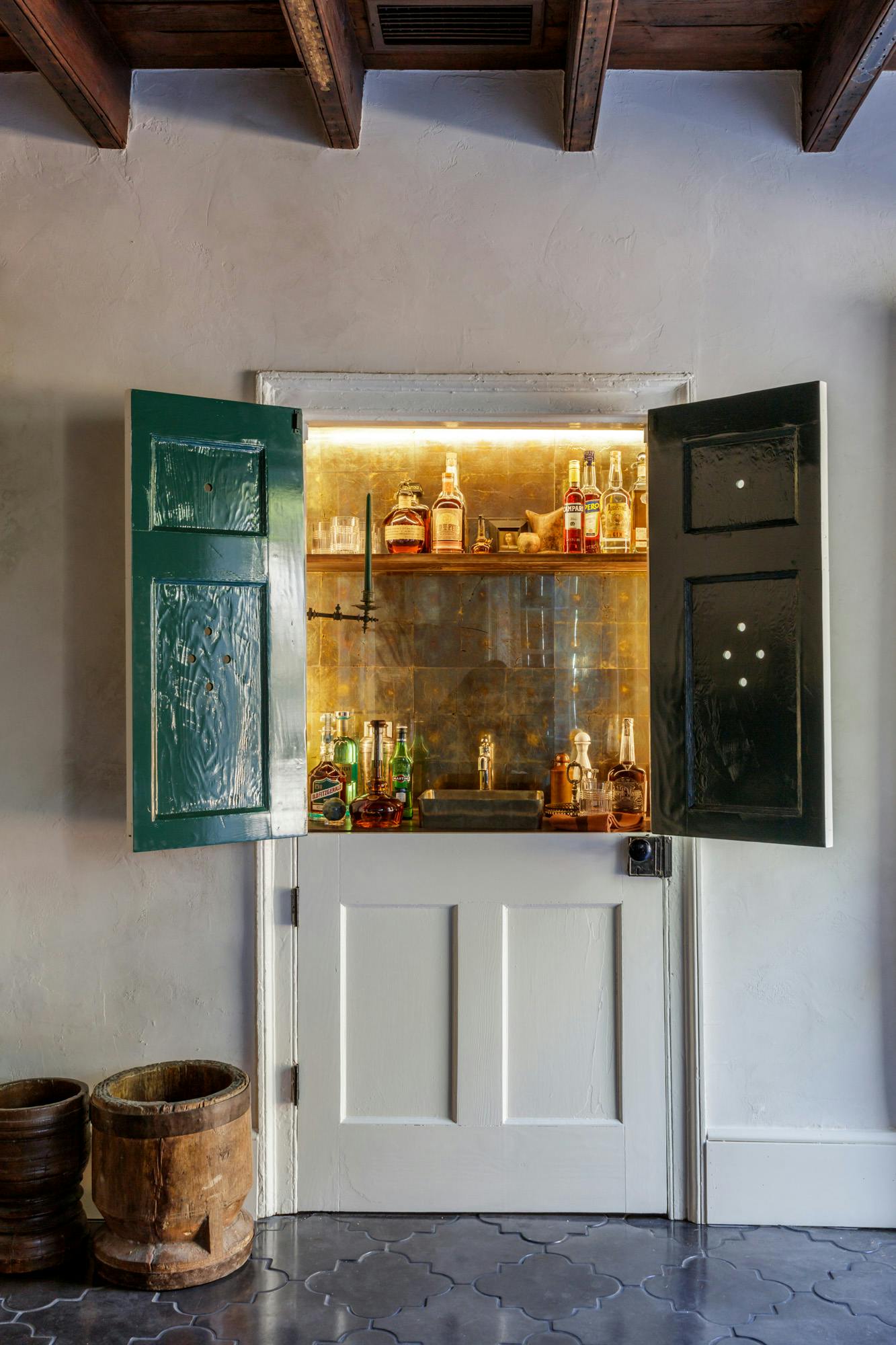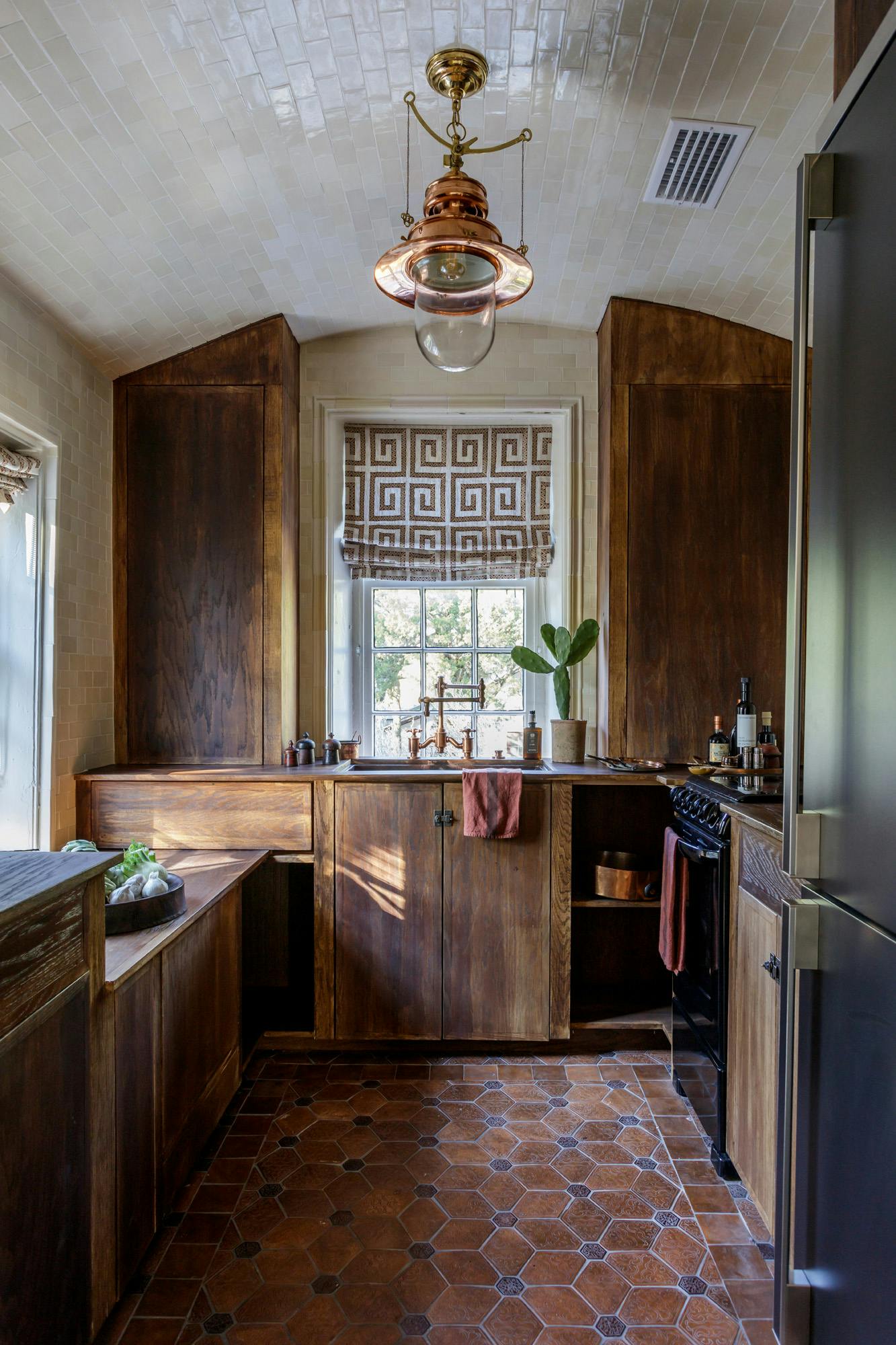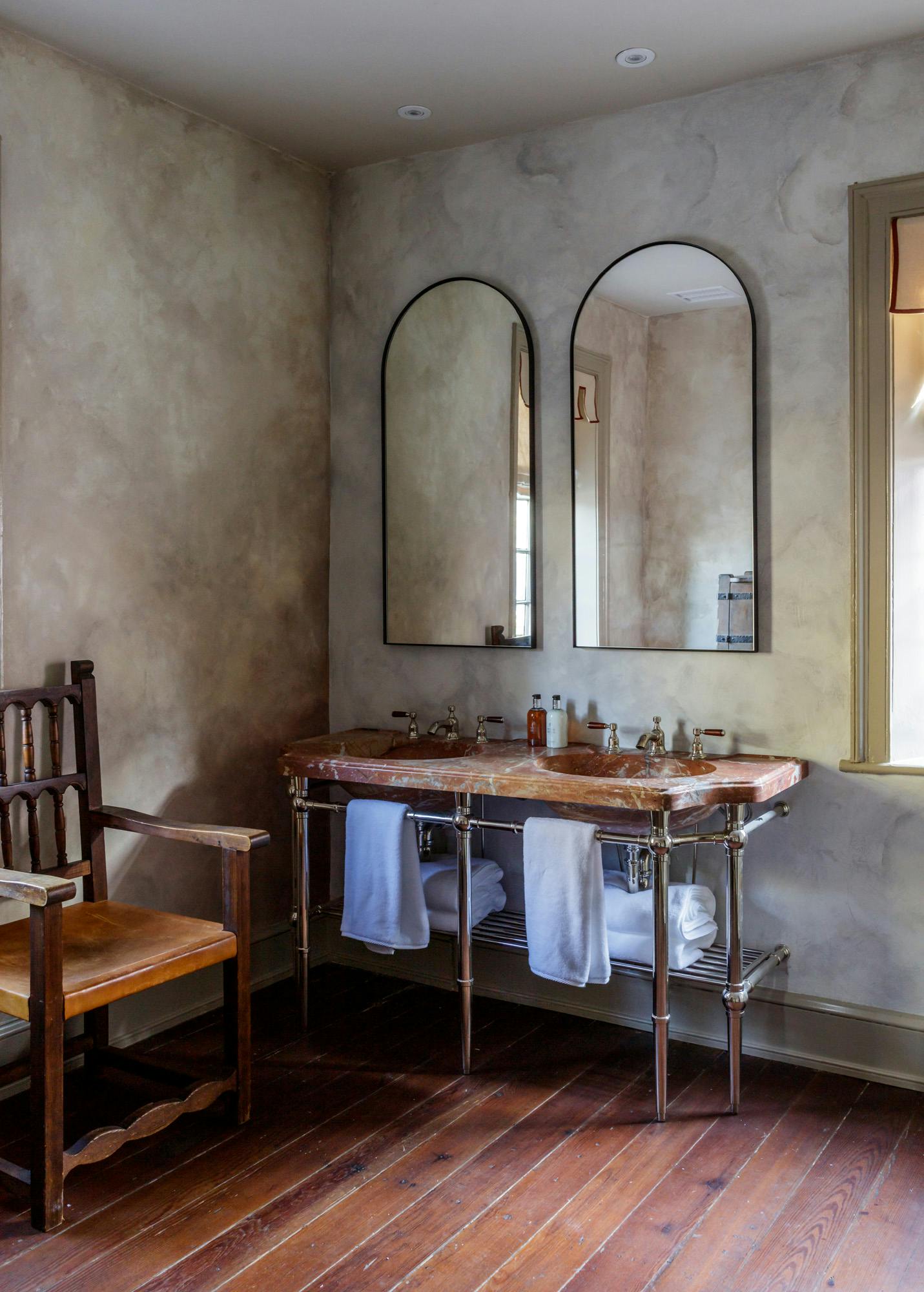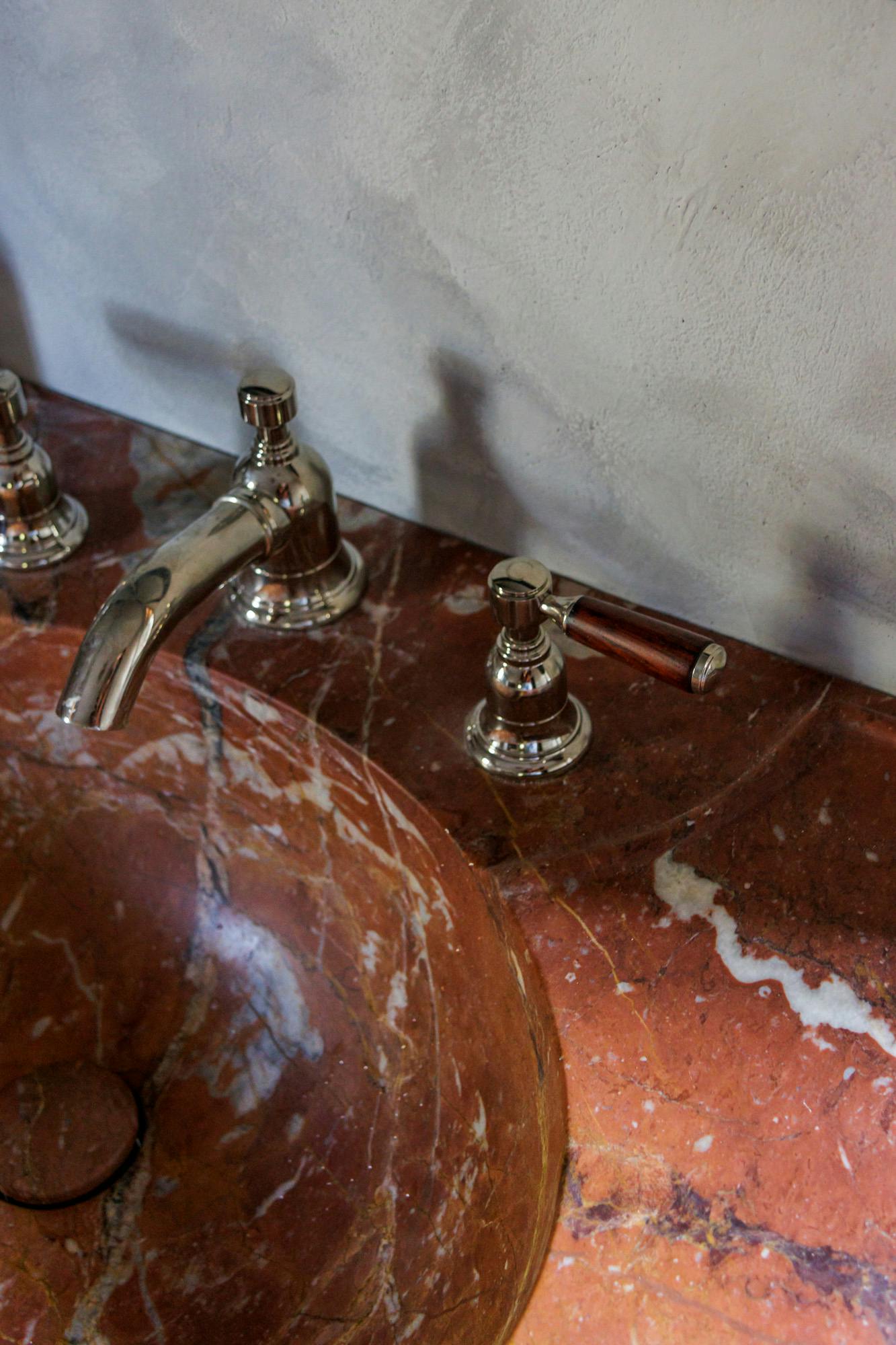Fairfield, Spanish Colonial Townhouse, Florida
This historic Spanish Colonial townhouse in St Augustine, Florida, was skilfully restored and transformed by Worth Turner
The presence of Spanish conquistadors pervades the deliciously atmospheric Spanish Quarters of St Augustine, Florida.
The oldest city in the USA, St Augustine was founded by the Spanish in the 16th century, and historic Triay Hall House at 42 Spanish Street, constructed around 1807, is notable for being one of the oldest houses, as well as one of the few examples of Spanish Colonial architecture that survive. This petite two-bedroom property, with its charming pink stucco exterior punctuated with weathered wooden shutters, was built from coquina, and epitomises living history. Not only is it on the National Register of Historic Sites, but it has been home to various dedicated local historians.
The current owner Worth Turner of Hollingsworth Showroom purchased the house with his father and began a seven-month renovation of the house in 2022. ‘It was important to us to preserve history and restore this home in keeping with the Spanish Colonial architecture of the time period, while also bringing the house into the 21st century - adding central air conditioning was our first obstacle,’ explains Worth. ‘The project came about due to a love of Spanish architecture and history, an admiration for St Augustine and wanting to preserve the beauty we saw within the space.’
The renovation was undertaken to breathe new life into the property, and this involved some structural work, replacing various windows and the creation of a new bathroom on the first floor. ‘We didn’t want to alter the home too much and it was important to revive the existing structure and not recreate a new house,’ continues Worth. ‘We enhanced several of the details we loved most about the house.’
Allowing the coquina shell to breathe and preventing it from breaking apart necessitated the use of a lime-based plaster on the walls and Worth introduced Venetian plaster throughout. ‘Finding suitable materials to restore the house was a challenge but the plaster gave us the old-world look while also working with the coquina,’ explains Worth. The result is a beautifully earthy, soft, and iridescent finish that provides an intoxicating backdrop.
Another enchanting element of the decor is the hand-painted designs that decorate the underside of the original wooden beams. The designs were replicated from other historic buildings in St Augustine and the Castillo de San Marcos fort, the oldest masonry fort in the US, and lend historical gravitas.
‘We are really pleased with the selection of materials and the items used in the house,’ notes Worth. ‘We knew it was important to focus on quality to ensure these items would last another 200 plus years. Timeless design that was appropriate to the age of the house was very important to us.’
In keeping with the period of the property, a dark and moody colour palette was selected. ‘We wanted something fitting for an old Spanish house. It helps add to the feeling that you are stepping back in time,’ explains Worth. ‘The stair rail and banister were the original oxblood red, so that became the inspiration for the master bedroom and ensuite. I was also set on keeping the richness of the wood throughout, which is why we stained the kitchen cabinets a dark chestnut with honey tones to pair with the terracotta floor.’
The compact layout means that one steps into the sitting room from the street, with the guest bedroom and bathroom downstairs and a kitchen, dining room, master bedroom and ensuite bathroom upstairs.
Throughout many of the rooms, a wealth of antique furniture, as well as 1920s Spanish Revival antique lights fixtures, heightens the historic atmosphere. ‘We brought in a lot of Californian Monterey furniture that dates from the 1920s Spanish Revival period,’ continues Worth. The beamed ceiling in the sitting room is enhanced with dark wood furniture, including an ancient bureau and elegant striped bobbin armchairs. Dark wood prevails too in the guest bedroom where a grand hand carved mahogany bed, with posts embellished with intricate discs, takes centre stage.
Because the downstairs bathroom is by the exit to the courtyard, Worth opted for a natural tonal colour palette. ‘An earthy feel was appropriate since this bathroom is just before you enter the courtyard,’ he notes. Ingenuity came into play when Worth transformed a large terracotta pot into a unique pedestal basin, complete with a brass wall-mounted tap.
Notable original features upstairs include the barrelled ceiling that spans the stair landing, dining area and kitchen. Previously plaster, it was tiled to cultivate a cocooning quality that enhances the atmosphere. In addition, most of the upstairs rooms feature the original hardwood floorboards dating from the 1800s and, remarkably, they required little restoration apart from cleaning and oiling.
The exposed coquina wall is a backdrop that exudes period character in the dining area. Here, a simple circular dining table is teamed with antique Monterey keyhole dining chairs with their primitive styling, which tone beautifully with the hardwood floor, evoking an old-world ambience.
New wooden custom cabinetry was installed in the kitchen. It was specially distressed on site to imbue an antique, worn appearance sympathetic to the age of the property and evokes a rustic air. Complementing the rich wooden tones, the earthy terracotta tiled floor came from Mexico and has dark accent pieces that tie in with the hardwood floors.
Exuding a formal, period ambience, the master bedroom features an elegant antique bed with turned bed posts as its focal point. Harmonising with the beautiful Venetian plaster walls, an exquisite Schumacher fabric envelops the bed and swathes the windows. Cleverly concealed behind one of the original doors in the room, which was specially cut to open like cabinet doors, is a hidden bar that showcases a bronze bar sink on a butcher block walnut countertop.
The en suite bathroom highlights a statement custom marble double washbasin designed specifically for the house. ‘It was a way to bring in something new that was older than the house itself,’ explains Worth. He sketched out a design and worked with a manufacturer in Italy while on holiday there to source the perfect block of russett marble that coordinates with the house’s colour scheme. The original wooden floor inspired the choice of taps. Samuel Heath’s Fairfield collection in polished nickel with iroko wooden levers was chosen for the double vanity and shower because the wooden levers were a perfect match. ‘The bathroom faucet was the first item we selected for this space and everything else was chosen around it,’ says Worth. Fairfield with its Arts & Crafts movement-inspired qualities and characterful details proved particularly appropriate for the scheme and beautifully elevates the decor.
The Collections
We don't think you're in North America
You're viewing our UK & EU website and product specifications may be different in your location.

